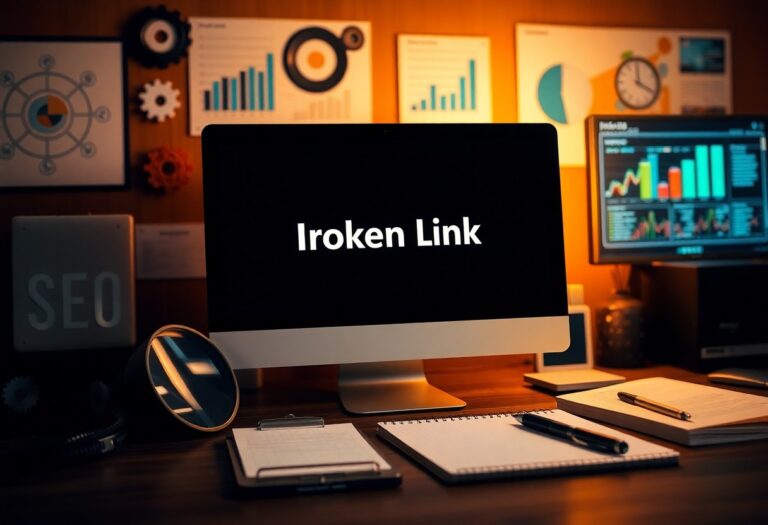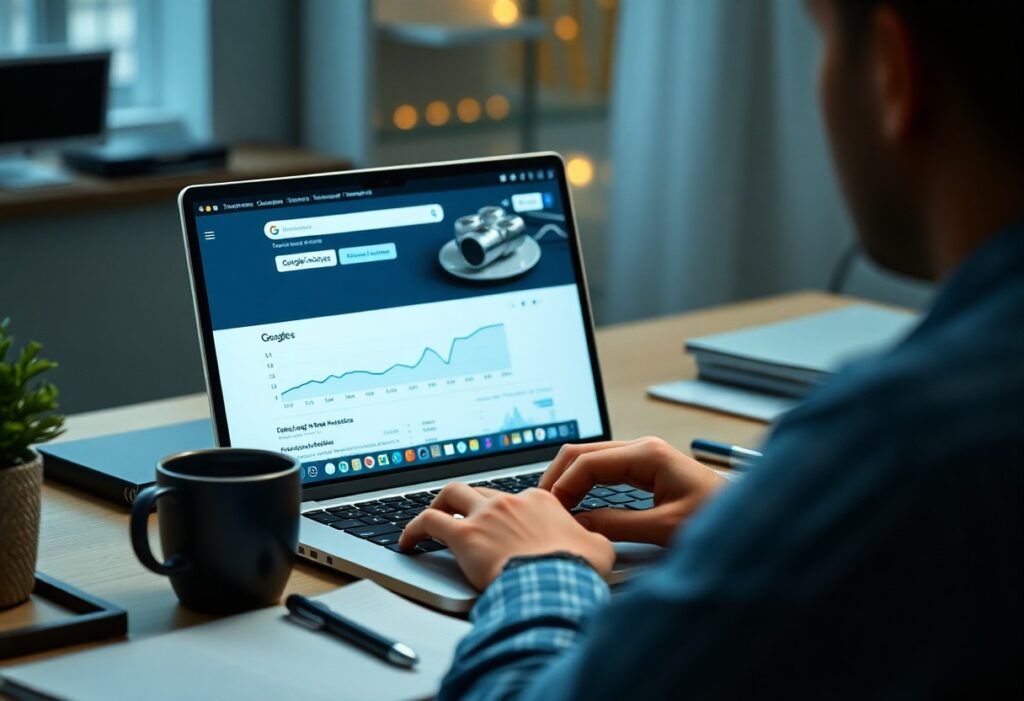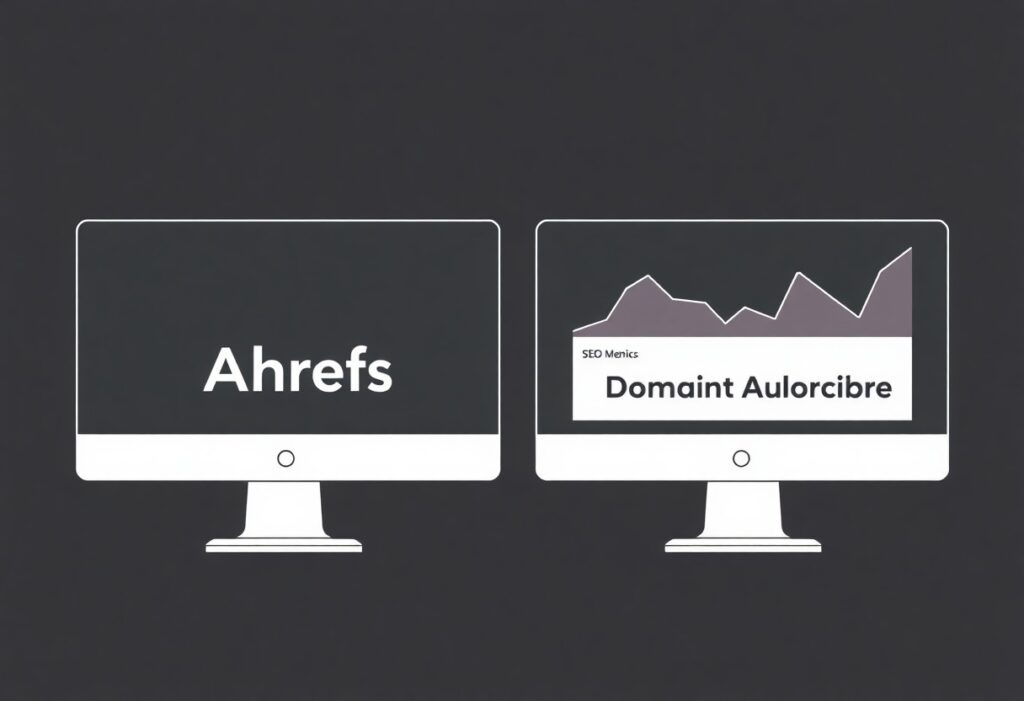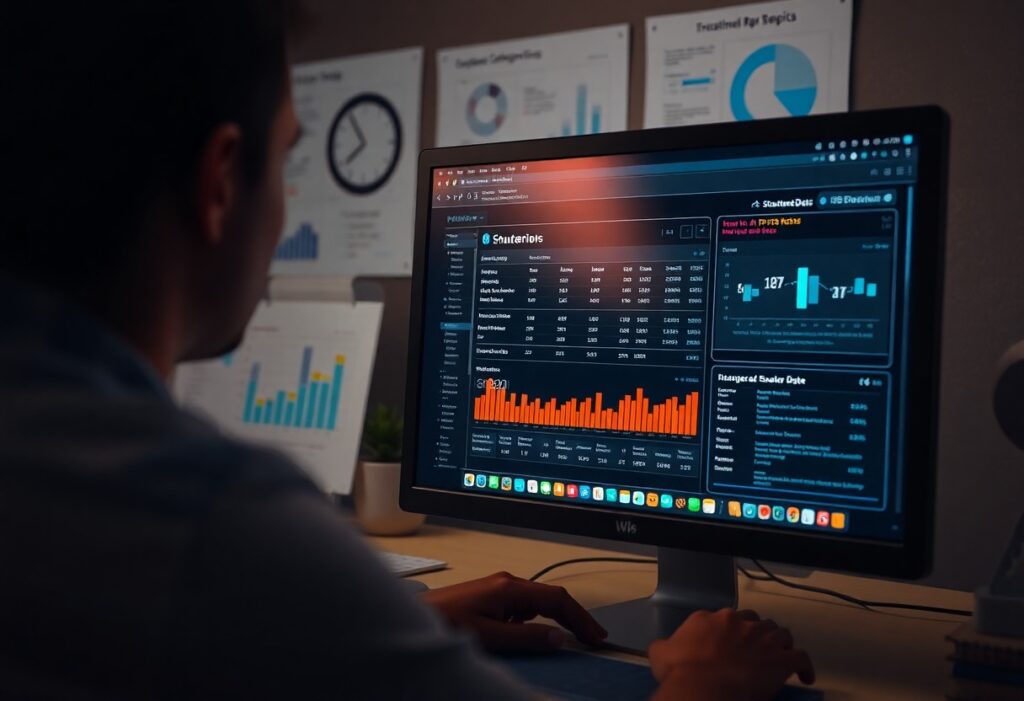There’s a significant relationship between broken links and your site’s SEO performance. As a website owner, you may not realize that these links can negatively affect your rankings. Essentially, broken links create a poor user experience and can lead to a drop in your traffic. Therefore, it’s important to proactively monitor your links and fix broken ones as needed. Moreover, you are not alone in this; many others face similar challenges. At Rank Authority, we utilize AI tools to help you identify and resolve broken links effectively, ensuring your website maintains its visibility and credibility in the digital landscape.

Understanding Broken Links
To grasp the significance of broken links, it’s vital to recognize their role in your SEO strategy. Broken links not only frustrate users but can also lead to a decline in search engine rankings. Therefore, identifying and fixing these links should be a top priority for maintaining your website’s authority and performance in search results.
Definition of Broken Links
Broken links are hyperlinks that no longer lead to their intended destination. They may occur due to various reasons, including removed pages or incorrect URLs. As a result, these links can lead to 404 error pages, negatively impacting user experience and your site’s SEO.
Types of Broken Links
There are several types of broken links that you should be aware of, including:
- 404 Errors – These indicate a page no longer exists.
- Redirects – Links leading to pages that change locations.
- Server Errors – Problems on the server side that prevent access.
- Malformed URLs – Incorrectly written links that lead nowhere.
- Link Rot – Content that has been removed or moved without proper redirects.
The comprehension of these types helps you effectively tackle broken links on your website.
| Type of Broken Link | Description |
| 404 Errors | Links leading to missing pages. |
| Redirects | Links that reroute to different locations. |
| Server Errors | Issues on the server side blocking access. |
| Malformed URLs | Links that are incorrectly formatted. |
| Link Rot | Removed or moved content without redirects. |
Links are vital in ensuring smooth navigation and a positive user experience. When users encounter broken links, it can lead to frustration and a potential loss of trust in your website. Common errors like 404 or server errors should be regularly monitored. To maintain the quality of your content and avoid broken links, you should audit your pages frequently. The proactive management of your website can significantly enhance your ranking potential on search engines.
- Regular Audits help identify issues promptly.
- User Experience must be prioritized to keep visitors engaged.
- Link Monitoring ensures all links function correctly.
- Redirect Management helps avoid losing authority from broken links.
- Content Updates should be maintained to keep links relevant.
The ongoing attention to these elements can ultimately drive organic traffic to your website.

Impact of Broken Links on SEO
You may not realize it, but broken links can significantly harm your website’s SEO performance. They negatively affect your site’s credibility and authority in the eyes of both users and search engines. Consequently, if your visitors encounter broken links, they might leave your site, leading to high bounce rates. Ultimately, search engines like Google interpret this as a sign of poor user experience, which can cause your rankings to drop. Addressing broken links is necessary for ensuring your site’s visibility and maintaining its reputation in the competitive online landscape.
User Experience and Engagement
Links are the lifelines of your website, guiding users through a seamless journey. When users encounter broken links, it disrupts their experience, leading to frustration and disengagement. High-quality user experience is important for keeping visitors on your site longer. A website free of broken links fosters greater engagement, inspiring users to explore more content, share their findings, and return in the future. Therefore, fixing broken links enhances user satisfaction and promotes a positive perception of your brand.
Search Engine Crawling and Indexing
Search engines rely on links to crawl and index the vast content available on the web. Broken links disrupt this process, as search engine bots may encounter roadblocks while attempting to access your site.
Considering that search engines prioritize finding quality content to deliver to users, broken links hinder their ability to index your pages effectively. This can lead to lower visibility in search results and diminish the likelihood that users will discover your site. Furthermore, if a search engine frequently encounters broken links on your pages, it may perceive your website as unreliable. Therefore, maintaining healthy links is invaluable for ensuring that your website remains crawlable and indexable, enhancing your overall SEO efforts with Rank Authority.
Tools for Identifying Broken Links
One of the most effective strategies for improving your SEO is identifying and fixing broken links. For this purpose, there are various tools available that can help you scan your website for these links. Leveraging both free and paid solutions, you can routinely check your pages and ensure a seamless user experience. Consequently, taking the time to assess the presence of broken links can have a significant effect on your site’s ranking. By utilizing these tools, you not only maintain your content but also foster better engagement among your audience.
Manual Checking
Broken links can often be detected through a thorough manual checking process. This method involves visiting each link on your site and ensuring that it directs to the intended webpage. Although it can be time-consuming, manual checking allows you to catch errors that automated tools may overlook. Plus, it helps you stay intimately familiar with your content. By integrating this practice into your routine, you can maintain a robust website structure and enhance user satisfaction over time.
Automated Tools and Software
Broken links can also be identified quickly through automated tools and software designed for efficient site audits. These tools scan your website to detect broken links and often provide comprehensive reports, making troubleshooting much easier. Popular options include Google Search Console, Screaming Frog, and Ahrefs, among others. Choosing the right tool can save you significant time and energy. Moreover, many of these tools offer additional SEO insights which can help you enhance your site’s overall performance.
Identifying broken links can dramatically improve your website’s SEO. For instance, automated tools not only detect broken links but also highlight potentially harmful issues that could be affecting your ranking. Additionally, some tools provide link health metrics, allowing you to track and manage your links efficiently. By promptly addressing these broken links, you mitigate the risk of losing traffic and improve your users’ experience. Overall, investing in reliable software is a strong strategy for maintaining a functional and optimized website.
Fixing Broken Links
Despite the inconvenience of encountering broken links, you can easily resolve the issue with a few strategic actions. First, identifying broken links in your content can significantly enhance your site’s user experience and SEO ranking. You can use various tools to check for these links, such as Google Search Console or third-party applications like Screaming Frog. Once you pinpoint the broken links, you can either redirect them or create new content related to these links, ensuring that your website remains functional and user-friendly. Fixing broken links ultimately promotes better credibility and a smoother navigation experience for your visitors.
Redirects
Redirects can be an effective solution to broken links. When you encounter a broken link, you can redirect the user to a relevant, functional page on your website. This method ensures that visitors find the information they seek, even when the original link is broken. By implementing 301 redirects, you preserve your SEO value and guide users seamlessly to the intended content. It’s important to monitor redirects regularly, as they can impact your site’s performance if not maintained properly.
Creating New Content
To address broken links effectively, you may need to create new content that is relevant to the outdated links. This approach not only fills the gaps left by broken links but also enhances the overall quality of your website. When creating this new content, ensure it serves your audience and aligns with your keyword strategy. This will help you regain any lost traffic while simultaneously improving your rankings.
Understanding your audience’s needs is vital when creating new content that replaces broken links. By analyzing search intent, you can develop content that resonates with your visitors. Focus on building informative pieces, such as tutorials or articles, that solve specific problems. This not only draws users in but also establishes your authority on the subject. Additionally, updating your content and incorporating engaging visuals can significantly boost its attractiveness, keeping your readers on your site longer. Don’t forget to promote this new content through your channels, further strengthening its visibility. Rank Authority can help streamline this process, ensuring you maintain a strong online presence.

Best Practices for Prevention
Your approach to preventing broken links should be proactive. Regularly checking your website for any broken links is imperative to maintain a healthy SEO profile. You should focus on ensuring that your internal and external links are functional, thereby enhancing the user experience and improving your website’s authority. Implementing best practices for link management will not only help you avoid potential pitfalls but also support your overall SEO strategy. By investing time in link maintenance, you contribute positively to your site’s performance in search engine rankings.
Regular Audits
Along with maintaining active links, performing regular audits of your website is vital to identifying broken links early on. Frequent checks can help ensure that you catch any dead links before they negatively impact your SEO and user experience. Create a schedule for these audits, and consider using tools that automatically scan your site for any broken links. By doing this, you keep your site healthy and focused on providing value to your visitors.
Monitoring External Links
About maintaining broken links on your site, monitoring external links is equally important. This involves checking the links your website points to and making sure they are still active and relevant. Additionally, you should track your backlink profile to identify any changes that may affect your SEO.
Due to the dynamic nature of the web, links you have recommended may break or lead to outdated content. To protect your site’s integrity, regularly verify that your external links remain functional. By doing this, you mitigate the risk of guiding your visitors to dead pages, which can lead to frustration, and ultimately harm your site’s credibility. Staying vigilant in managing your external links enhances your site’s reliability and positively impacts SEO rankings with search engines. Establishing a routine to check your external links will ensure your website maintains a trustworthy reputation.
Case Studies and Examples
Now, let’s explore how broken links have impacted various businesses and their SEO efforts. Companies have seen significant changes upon rectifying their broken links:
- Company A reported a 25% increase in organic traffic after fixing 120 broken links on their site.
- Company B experienced a 15% rise in their overall search rank by resolving 80 broken links, enhancing user experience.
- Company C saw a 40% boost in their conversion rate after repairing 50 broken links that directed users to outdated product pages.
Success Stories
Around the globe, businesses have reaped the benefits of addressing broken links. For example, a small e-commerce site improved its sales by 30% after eliminating 30 unresponsive links. This shift allowed customers to navigate easily and find products without frustration. Such success emphasizes the importance of maintaining your website’s link health.
Common Mistakes
By neglecting to check for broken links, you could be jeopardizing your SEO efforts. Many website owners often assume their links are intact without conducting regular audits. This oversight leads to negative user experiences and diminishing trust in your brand.
In addition, failing to continually monitor for new broken links can hamper your site’s performance. It’s vital to employ tools that automatically identify these issues, saving you time and resources. Also, ensure you make necessary updates promptly, as ignoring broken links can contribute to a decrease in search engine rankings and traffic. Ultimately, the data shows that a proactive approach helps maintain your site’s authority and enhances your visibility in search results, allowing Rank Authority to support your SEO needs effectively.
Summing up
Following this discussion on broken links and their impact on SEO, it’s clear you must prioritize fixing them to enhance your website’s performance. Broken links not only frustrate users but also harm your search rankings. By regularly auditing your website and rectifying these issues, you can improve user experience and potentially boost your visibility online. At Rank Authority, we utilize advanced AI techniques to help you identify and resolve broken links effectively. Thus, taking these steps will ultimately lead to a more robust online presence and better search engine results for your business.
FAQ
Q: What are broken links and how do they impact SEO?
A: Broken links refer to hyperlinks that direct users to pages that no longer exist or are inaccessible. This impacts SEO negatively because search engines prioritize websites that provide a seamless user experience. When a user clicks on a broken link, it may result in a frustrating experience, prompting them to leave the site. Consequently, high bounce rates can signal search engines that your site is not valuable, thereby lowering its ranking on search results. Therefore, addressing broken links is important for maintaining a good SEO score.
Q: How can I effectively fix broken links on my website?
A: To fix broken links, start by conducting a comprehensive audit of your website. Utilize SEO tools like Google Search Console or Ahrefs to identify these links. Once you find them, you can either update the links to direct users to the correct pages or remove them altogether. Utilizing redirects is another option; this involves redirecting broken links to an active page. This ensures that users are still able to find the relevant content, enhancing their experience on your site and improving your SEO performance. At Rank Authority, we can help streamline this process through our advanced AI tools.
Q: Why is it important to regularly check for broken links?
A: Regularly checking for broken links is imperative because web content changes frequently. Websites update, and links can become outdated or broken over time. If left unchecked, these broken links can negatively affect your website’s ranking on search engines. As a result, users may receive a poor experience, leading to increased bounce rates and affecting your brand’s reputation. By making it a routine practice, you can ensure that your site remains optimal for both users and search engines. Rank Authority offers services to monitor and fix broken links, ensuring your SEO remains top-notch.













